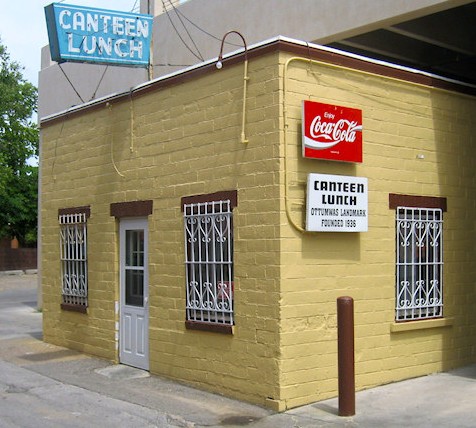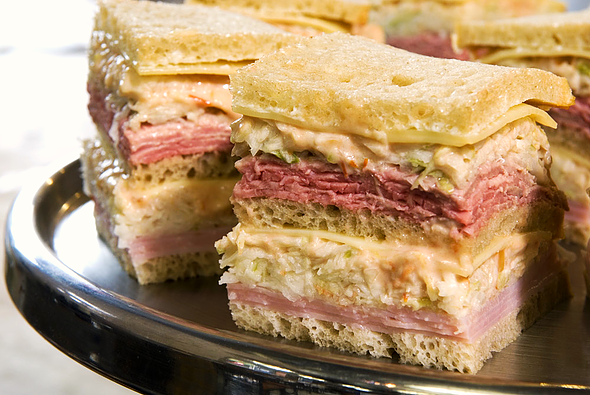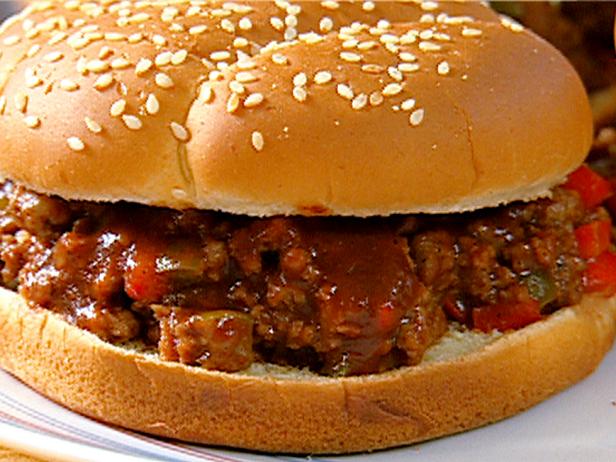Sloppy Joe: America’s Quintessential Loose Meat Sandwich

I guess I was a young teenager when I first heard of a sloppy joe. I remember the sandwich being served for lunch in my junior high (known today as middle school) cafeteria. But since I brown-bagged my lunch in those days, it was a year or two later before I actually ate one.
One day while hanging out at my childhood best friend Billy's house, his mother invited me to share lunch. Eating at Billy's house was always special, not because his mom was a better cook than mine but because she prepared dishes my mom didn’t. I eagerly accepted. Right there at an old picnic table in Billy’s back yard I had my first sloppy joe.
Perhaps it’s because I've always been a zealous hamburger fan that I cannot really appreciate the concept. For whatever reason, I was totally unimpressed then by the sloppy joe and remain of the same mind today.
The sloppy joe began making its appearance in food columns, advertisements, and cookbooks in the early 1940s. In the October 29, 1944 issue of the Coshocton (Ohio) Tribune, The Hamburg Shop advertised among its offerings a new sandwich--the Sloppy Joe for ten-cents. By the 1950s this sandwich, consisting of ground beef, onions, Worcestershire, ketchup or tomato sauce and various seasons served on a bun, had become a lunch counter and school cafeteria staple.

The popularity of this economical sandwich continued to grow so much that in 1969 Hunt’s, a ConAgra company, introduced Manwich Sauce to the American consumer. A pound of cooked ground beef and a can of Manwich enabled every housewife to make delicious sloppy joe’s for their family. Hunt's marketed Manwich with the slogan, “A sandwich is a sandwich, but a Manwich is a meal.”
Over time, the exact genesis of this American sandwich has been lost. Some say it was the creation of José Abeal y Otero, owner of a Havana bar. Others credit the Silver Slipper (renamed Sloppy Joe’s) owner Joe Russell in Key West. Still another theory is that in the 1930s an Iowa cook named Joe at one of Fred Angell’s Maid-Rite restaurants came up with the concept.
Conjecture on how the sloppy joe got its name is as varied as that of who invented the sandwich itself. Was it named after the Maid-Rite cook who is said to have created it, or after the Havana and Key West bars of the same name? Another story attributes the name to one of Angell’s customers whose name was Joe, after eating one of the messy sandwiches.

One thing in which almost every food historian agrees is that the precursor of the sloppy joe was the “loose meat sandwich,” also known as a steamer or tavern sandwich. The loose meat sandwich, originating in the 1920s at Ye Olde Tavern in Sioux City, Ohio, was nothing more than crumbled ground beef with seasonings served on a bun with mustard and pickles.

Some of you may remember the loose meat sandwich served at the fictional Lanford Lunchbox on the 1992 Roseanne television sit-com. It is said the inspiration for the Lunchbox was a real-life restaurant called Canteen Lunch in the Alley in Ottumwa, Ohio. Roseanne’s then-husband and co-star Tom Arnold is from Ottumwa.
Sloppy joe’s are often referred to by various names depending on what region of the U.S. you're in. Some of those names include: barbecues, dynamites, slushburgers, steamers, and yum-yums. And while usually made with ground beef, some variations include ground chicken, turkey, pork, and even a combination of meats. Vegetarians also enjoy sloppy joe's by substituting vegetable protein for the meat.

In northern New Jersey, a completely different sandwich emerges. In 1936, the Town Deli in Orange, New Jersey added to its menu the Original Sloppy Joe, a double-decker deli sandwich consisting of cow tongue, ham, and Swiss cheese on thin rye bread, topped with cold slaw and lots of Russian dressing. This infamous State favorite is still available at the Town Deli, along with ten Joe Sandwich variations.
Today the Sloppy Joe remains a popular sandwich, especially in schools, retirement communities, and diners all across this great nation. Several other countries have similar culinary creations. For example in China, roujiamo is a popular street food consisting of stewed pork combined with over 20 herbs and spices served in mo, a type of flatbread, or on a steamed bun. In India, a pav bread roll filled with keema, a mixture stewed and curried lamb or mutton with potatoes and peas.

If you’ve never eaten a sloppy joe I encourage you to try one. I’ve included a recipe for the classic version, or you can pick up a can of Manwich at your local supermarket and follow the instructions on the can. Either will provide a fast, economical meal, and you may very well become a loyal sloppy joe fan. As for me, my undying loyalty will remain with the all-American hamburger.
Make Em: Classic Sloppy Joes



